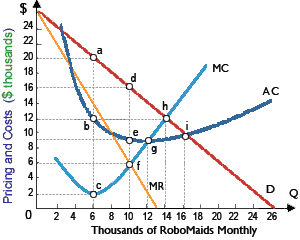At the point on the demand curve for RoboMaids where the price elasticity of demand is unitary, the price would be roughly: (i) $10,000, resulting in sales of roughly 16,000 robots monthly. (ii) $13,000, resulting in sales of approximately 13,000 robots per month. (iii) $16,000, resulting in sales of approximately 10,000 robots per month. (iv) $20,000, resulting in sales of about 6,000 robots per month. (v) $23,500, resulting in approximately 1,800 robots being sold each month.

I need a good answer on the topic of Economics problems. Please give me your suggestion for the same by using above options.